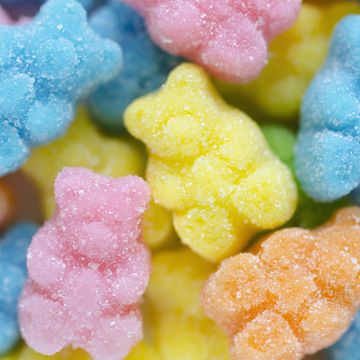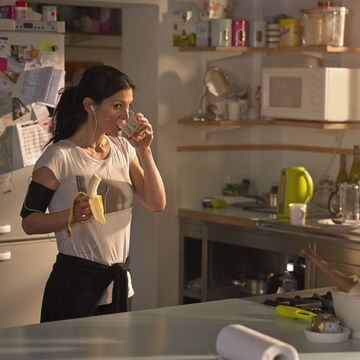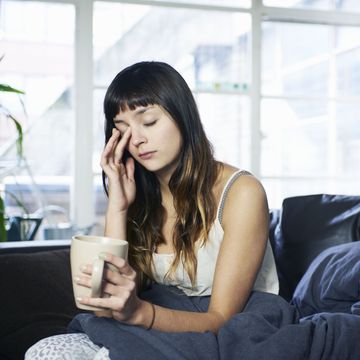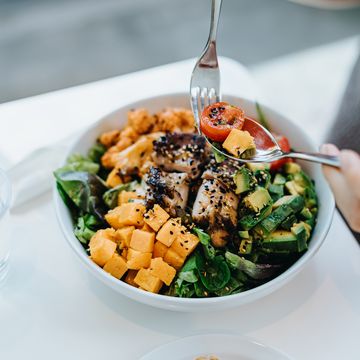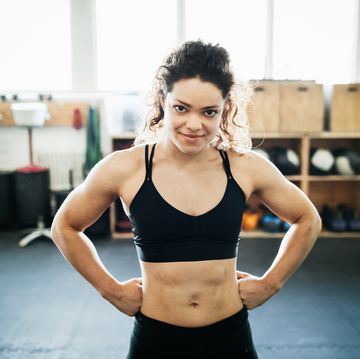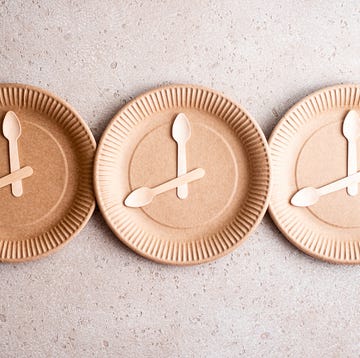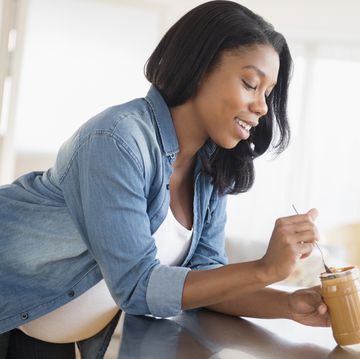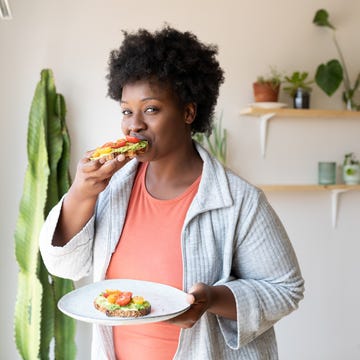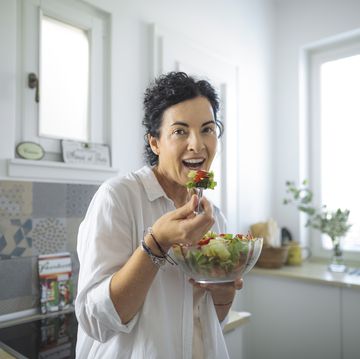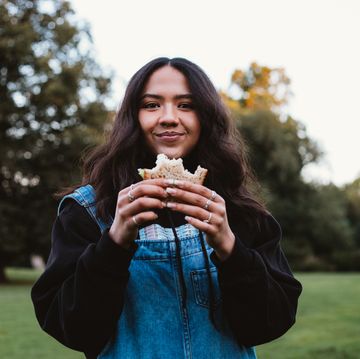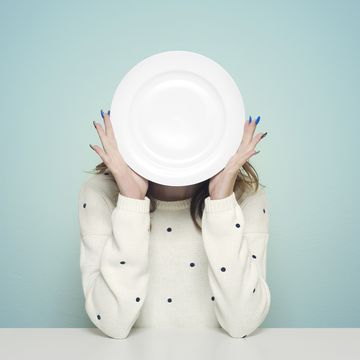'Are there any foods or exercises that help with PMS? I always have a painful first day and my GP confirmed it's not endometriosis...'
The expert: Tai Ibitoye, a UK Registered Dietitian and Women's Health Collective panellist
You can probably, without much difficulty, recall plenty of times you carried on as per normal, despite the breaking down and disposal of your uterine lining during your menstrual cycle.
Work? Accomplished. Errands? Run. Social engagements? Attended. And, all the while, you might have been experiencing some unpleasant and painful symptoms of PMS, such as cramping and breast tenderness, too.
It’s not surprising that many who menstruate operate as if on auto-pilot whilst on their periods, and often despite having PMS. We could scarcely fill a small metaphorical pencil case with the knowledge we were taught about our cycles during our schooling years, not to mention that we exist in a society with a tendency to normalise, nay, champion “powering through.”
Research from 2017 found that 1 in 4 UK uterus owners don’t understand their menstrual cycle – a worry for many reasons, not least since a lack of knowledge could result in crucial signs that something’s off being missed. But, also, because when we’re in-the-know, we’re better prepared to work with, instead of against, our bodies, and ensure our cycles pass as pain- and eventless as possible.
The reality, though, is that 84.1% of menstruaters experience period pain, with 43.1% reporting pain that accompanies every single period – and we, generally speaking, have little insight into how to reduce pain and PMS symptoms. You should know, though, that there are some simple and effective ways to manage mild period pain.
If you’re in the 43.1%, or you experience pain that interferes with your ability to go about your day, speak to your GP to rule out endometriosis and other conditions. If you’d like to learn how you may be able to lessen mild menstrual pain, read on.
We asked Tai Ibitoye, a UK Registered Dietitian and Women's Health Collective panellist, what nutritional tweaks we should be making around the time of our menstrual cycles to reduce period pain.
What foods can help to ease period pains?
Generally speaking, we experience cramps when the womb contracts to shed its lining, which becomes your period. The contractions compress blood vessels and temporarily interrupt blood and oxygen supply to the womb.
When this happens, the womb releases pain-triggering chemicals, and these chemicals cause the contractions to increase, causing further pain. There’s some evidence, though, to suggest that certain nutrients could help to lessen period pain.
Up your intake of calcium and vitamin D
‘Higher consumptions of calcium and vitamin D through foods have been associated with a lower risk of PMS,’ says Ibitoye. ‘These nutrients may influence its development through their relationship to oestrogen.’ Research shows that decreased calcium levels can lead to muscle spasms and contractions, so be sure to get your daily does of dairy (or plant-based alternative).
‘Foods containing calcium include dairy milk or calcium-fortified plant-based alternatives such as soya drink, cheese, soya beans, tofu, rice pudding, calcium-fortified breakfast cereals and bread, sardines, pilchard and tinned salmon with bones, okra, kale, broccoli and spring greens,’ says Ibitoye. ‘Good sources of vitamin D include oily fish, lean red meat, egg yolks, fortified breakfast cereals and mushrooms exposed to sunlight.’
Consider increasing your intake of magnesium
'There is some evidence, although more research is needed, to suggest that magnesium may be beneficial in relieving PMS symptoms such as water retention, breast tenderness, soreness and insomnia,’ says Ibitoye. ‘It is worth including magnesium food sources, like pumpkin or chia seeds, almonds, cashew nuts, nut butters, porridge oats, beans, wholemeal bread, spinach and broccoli, in your diet.’
Be sure to eat enough iron-abundant foods
‘Regular intake of iron-rich foods has previously been linked with a lower risk of PMS,’ says Ibitoye. ‘People who are menstruating should ensure they are have an adequate intake of iron (iron demands are higher for womb-havers compared to men),’ 14.8mg a day is the recommended amount.
‘Good sources of iron include nuts and seeds, iron-fortified breakfast cereals, chicken, fish, and dark green leafy vegetables like spinach and kale,’ says Ibitoye. ‘You can also increase the iron available to your body from plant-based options by consuming plenty of fruits and vegetables high in vitamin C.’
Eat a nutritious, balanced diet
‘Overall, aim to have a balanced and healthy diet by eating plenty of fruits and vegetables, starchy complex carbohydrates, lean proteins or plant-based options and dairy or dairy alternatives,’ Ibitoye advises. ‘Try to limit intake of caffeine, sugar, salt, and alcohol as this may exacerbate symptoms, plus, a higher intake of these has been associated with an increase in the stress hormone cortisol and a decrease in serotonin, which may also impact symptoms.’
What else can I do to ease period pains?
Research suggests that exercise may be helpful in not only reducing period pain, but also improving mood and outlook. There isn’t a great deal of evidence that suggests one type of training is superior to another for relieving cramps, however, you may not feel up to high intensity training in the lead-up to and during the first few days of your period if you’re experiencing pain, discomfort, or fatigue. The best thing to do is engage in movement that feels good for you, whether that’s walking, weight lifting, dancing, or yoga.
You could also try taking a warm bath or applying (indirect) heat to the area to relieve period pain, or lightly massaging your lower tummy using circular motions.


